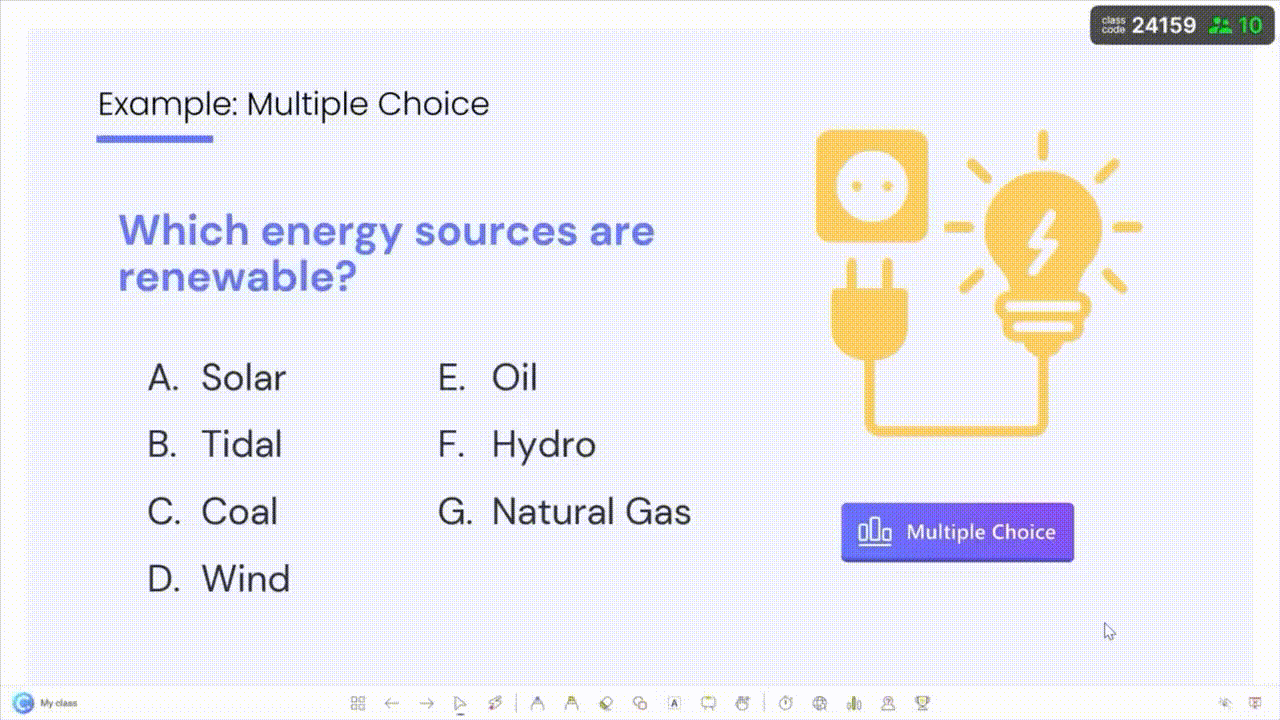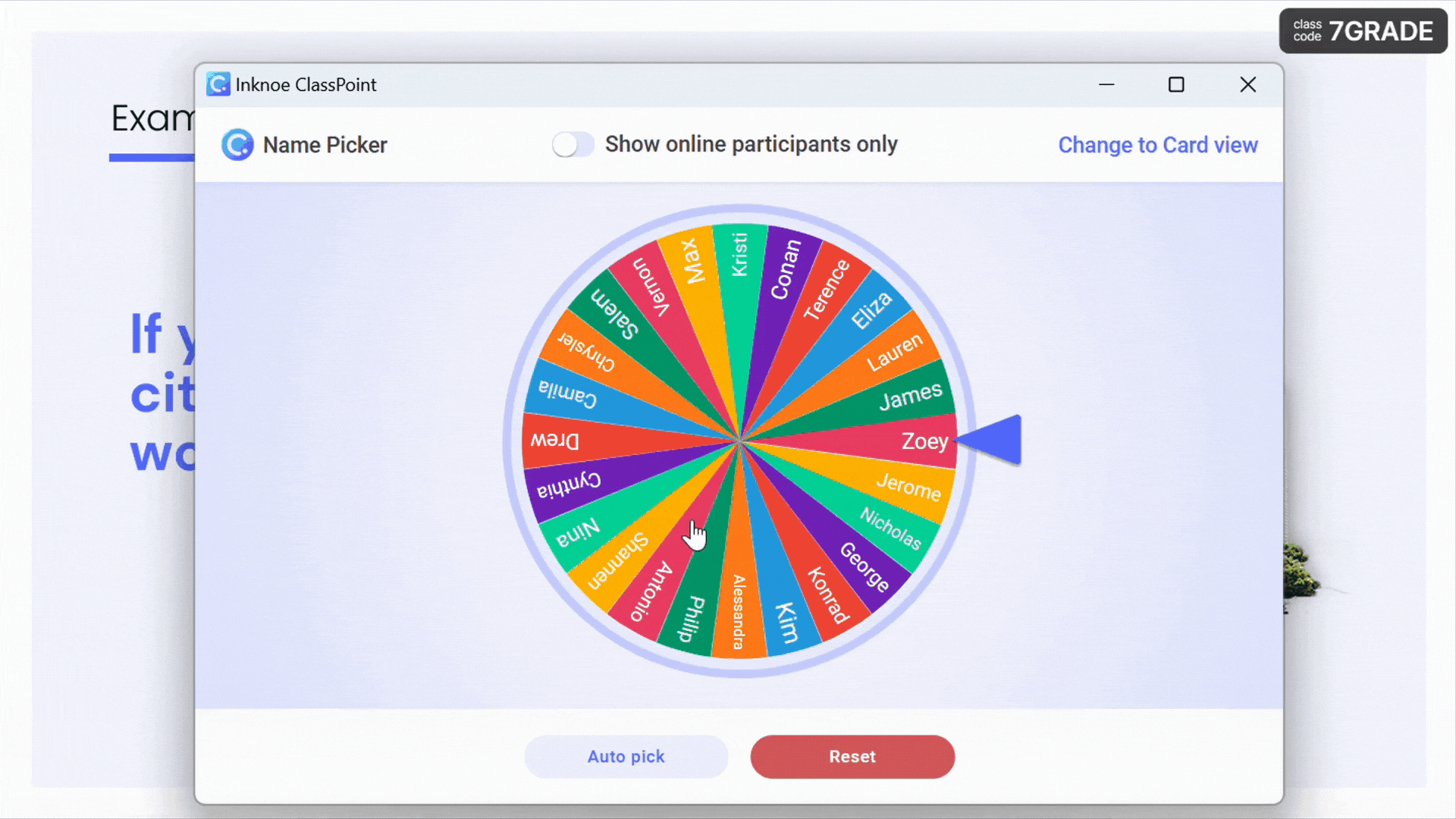“Do you have any questions, class?”
As teachers, you might have asked this question to your students in the past. And you might have also observed that only few (or sometimes none) of them respond well.
Oral discussion is one of the popular methods to engage student participation. But sometimes, it does not work.
Various factors hold students back from participating such as being shy, fear of being wrong or embarrassed, classroom culture, and different learning styles and preferences.
To support you in engaging students more actively, here are some strategies to use in your classroom:
1. Build a Safe and Supportive Environment
Building a safe and supportive environment in your classroom really starts with the way students feel when they walk through the door.
Get to know them not just as students, but also as people. Ask about their interests and what they do outside the classroom. Even small things like greeting them at the door or checking in with a quiet student can make a big difference.
If they sense that this is a place where they won’t be judged, where their ideas are valued, and where mistakes are treated as part of learning, they’re going to participate more freely.
2. Incorporate Technology and Interactive Tools
When you bring technology and online tools into your classroom, you open up more pathways for students to participate. Not every student feels confident raising their hand, but digital platforms give them different ways to engage that match their comfort level and learning style.
These interactive tools help in increasing student participation:
- Live polls: to collect real-time responses
- Digital discussion boards: for quieter students to contribute
- Interactive slides: where students can draw, annotate, or submit answers
These tools not only add variety but create a more inclusive classroom where every student has a chance to be heard and involved.
Speaking of variety, you might want to check out 25+ Classroom Technology Tools That Are Actually Worth Using.
3. Differentiate Participation Methods
Remind yourself that every student has a different learning style. Not every student will feel comfortable speaking out loud, so you should welcome various participation methods that can benefit all your students.
Some thrive in oral discussions, while others do better in:
- visual
- auditory
- reading/writing
- kinesthetic
Offering variety makes participation more inclusive, reduces anxiety, and helps you hear from voices that might otherwise stay silent.
When students know there are multiple ways to contribute, they’re more engaged and more likely to take part.
To cater to students with with different learning styles, the key is flexibility. Try to mix learning approaches so every student finds an entry point.
4. Use Active Learning Strategy
Active learning is a teaching approach that engages students in activities and discussions, making them directly involved in their own learning.
It shifts students from passive listeners to active participants. When students do something with the lesson, they process it more deeply and are more likely to retain it.
These are examples of active learning strategy:
- Think-Pair-Share: students think individually, discuss with a partner, then share with the class.
- Small group discussions: students rotate roles like note-taker or spokesperson to involve everyone.
- Jigsaw activities: each group becomes an “expert” on one part of the topic and teaches others.
Beyond academics, active learning builds collaboration, communication skills, and confidence. These qualities carry students over into every part of their learning journey.
If you need ideas on how to incorporate active learning in your classroom, check out How to Create Engaging Lectures with Active Learning.
5. Ask Better Questions
When it comes to asking questions that truly increase participation, the key is in how you frame them.
Asking better questions is essential because the quality of your questions shapes the quality of student thinking and participation.
Simple yes-or-no prompts often shut down dialogue, while open, thoughtful questions invite students to explain, explore, and connect ideas.
Here’s a simple guide to ask better questions to your students:
| Advice | Sample | Why it works |
| Use open-ended prompts | “What do you find most challenging about this concept?” | Encourages explanation, not just recall |
| Reframe “Do you have any questions?” | “What questions do you have?” | Opens the door for more voices |
| Invite multiple perspectives | “What are some other ways we could approach this?” | Shows value in diverse ideas |
| Connect to real life | “How would this apply outside of school?” | Makes learning relevant |
| Scaffold complex ideas | Start simple, then move to deeper “why” or “what if” questions | Builds confidence step by step |
When students feel their contributions are valued and that there’s room for multiple perspectives, they’re more willing to take risks, share openly, and stay engaged in the learning process.
Building in wait time is also important when you ask questions to your students. For example, try to pause 5-10 seconds after asking. This is to give all students time to think of their answers.
6. Gamify Participation
Gamifying student participation increases engagement because it taps into students’ natural motivation for challenge, recognition, and fun.
When points, badges, or leaderboards are added, participation feels less like a task and more like a game. This sense of achievement encourages students to contribute more often, while friendly competition keeps energy levels high.
To get you started, here’s a simple checklist for you:
Gamification Checklist for Student Participation
✅ Identify small actions to reward: speaking up, helping peers, asking questions
✅ Choose a light tracking method: stickers, stars on the board, or digital points
✅ Keep rewards simple: extra free time, class privileges, shout-outs, or certificates
✅ Celebrate frequently: recognize effort right away, not just at the end
✅ Focus on effort, not just correctness: reward trying, sharing ideas, or improvement
✅ Mix individual and group incentives: let students earn points for themselves and their team
In short, turning participation into a rewarding, playful experience transforms the classroom into an active space where students want to take part.
Gamification doesn’t have to be complicated and time-consuming. You can check Easy Gamification Examples in the Classroom for more ideas.
7. Reflect and Give Feedback
Incorporating student reflections and giving them feedbacks increase their participation because it helps your students see that their efforts matter and that their voices are heard.
Reflection activities, like asking them “What’s one idea you learned today?”, encourages students to process what they’ve experienced, making the learning more personal and meaningful.
Giving constructive feedback shows students where they are doing well and where they can grow, giving them a clear path forward.
When combined together, it builds a sense of ownership, motivates your students to keep improving, and creates a classroom culture where learning is an ongoing dialogue rather than a one-way delivery.
Turning Participation Into Everyday Practice With ClassPoint
Student participation grows strongest when it fosters in every part of the lesson. Instead of an afterthought, it should be something students expect and look forward to each time they enter the classroom.
Most teachers already rely on PowerPoint to deliver everyday lessons. ClassPoint builds on this familiar tool and adds interactive features right inside it, so you can strengthen student participation without changing how you already teach.

With ClassPoint living right inside your PowerPoint, you can:
- Run on-the-spot live quizzes. Check understanding instantly and turn lessons into active, two-way learning moments.
- Open the space for anonymity. Allow anonymous submissions so hesitant students can share ideas without fear.
- Play around with different question formats. Use media uploads, slide drawing, and other interactive options to match diverse learning styles.
- Motivate with a gamified reward system. Stars, levels, and leaderboards bring a sense of fun that keeps participation high.
- Keep students on their toes. Add variety with live presentation tools like the wheel of names or drag-and-drop activities.
- Track student progress. Access class reports, analytics, and session summaries to understand participation over time.

With ClassPoint, participation becomes a classroom culture where every idea has space, and every student gets a voice.
FAQs
Is it possible to increase student participation if I don’t use technology or online tools?
Definitely. Simple strategies like think-pair-share, role play, peer teaching, and movement-based activities can spark engagement without screens. The key is variety and giving every student an entry point, whether through speaking, writing, or collaborating in small groups.
What’s the most effective low-prep way to increase participation in big classes?
Add interactive elements directly into the slides you already use. A quick poll or short quiz mid-lesson gives every student a chance to engage at once. This works especially well in lecture-heavy settings where traditional discussions are impractical. ClassPoint makes this seamless by embedding polls and quizzes into PowerPoint itself.
How do I balance dominant voices with quieter students?
Mix verbal discussions with activities that allow anonymous submissions. Highlighting anonymous answers in class shows students their input matters, without the pressure of speaking out loud. Over time, this helps quieter students build confidence to participate more openly.
How do I prevent participation from feeling repetitive or routine?
Change the format regularly. Move between think-pair-share, group discussions, polls, and creative responses like drawing or role play. Variety helps sustain interest and reduces fatigue.
Can student participation be measured beyond quantity?
Yes. Look for the quality and variety of responses. A single thoughtful contribution can be more valuable than frequent surface-level answers. Keeping notes or using reflection logs helps capture these moments.
